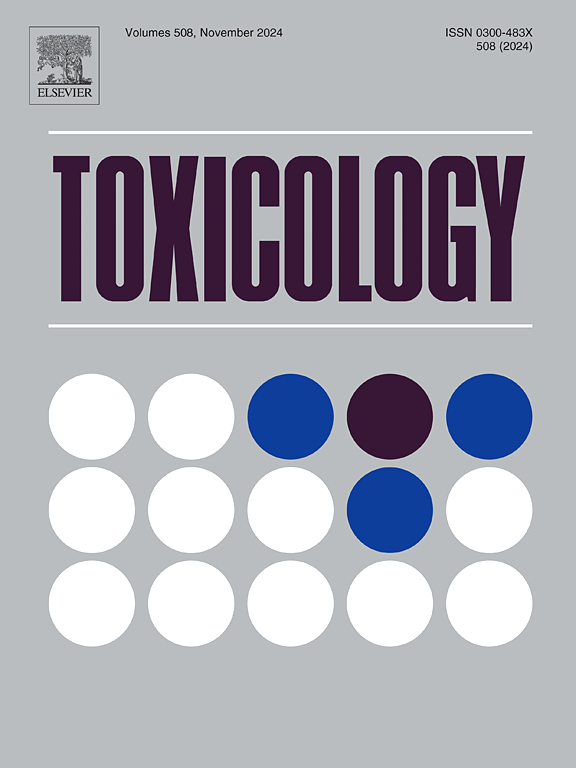Infant mice fed soy-based formulas exhibit alterations in anxiety-like behaviours and the 5-HT system
IF 4.8
3区 医学
Q1 PHARMACOLOGY & PHARMACY
引用次数: 0
Abstract
Genistein (GEN) is a phytoestrogen with oestrogen-like activity found in many plants. Classified as an endocrine disruptor, GEN is potentially hazardous, particularly during developmental stages. It induces alterations in anxious behaviour, fertility, and energy metabolism, alongside modifications in specific brain circuits. As the serotonin (5-HT) system is critically involved in many of these behaviours, we hypothesised that some of GEN’s behavioural effects might results from disruptions in the development of the 5-HT system. To test this, we examined the impact of early postnatal exposure to GEN at a dose of 50 mg/kg body weight, mimicking the exposure level of infants consuming soy-based formulas, on anxiety-related behaviours and 5-HT neuronal populations in the raphe nucleus. Male and female CD1 mice were treated orally with GEN or a vehicle during the first 8 days of life. On postnatal day 60, one cohort underwent anxiety behaviour testing, while another was euthanised for immunohistochemical analysis. Behavioural testing revealed that male control mice exhibited higher anxiety levels than females, whereas GEN exposure produced sex-specific effects: anxiolytic in males and anxiogenic in females. Immunohistochemical analysis of the raphe nuclei demonstrated significant alterations in 5-HT neuronal numbers in GEN-treated animals. Specifically, GEN exposure affected dorsal and median raphe 5-HT neuronal populations in a sexually dimorphic manner, with females showing a reduction and males an increase in 5-HT neurones compared to controls. These findings indicate that the regulation of anxiety-related behaviours and the 5-HT system are key targets of early phytoestrogen exposure at levels comparable to those in soy-based infant formulas.
喂食大豆配方奶粉的幼鼠表现出焦虑样行为和5-羟色胺系统的改变。
染料木素是一种具有雌激素样活性的植物雌激素,存在于许多植物中。GEN被归类为内分泌干扰物,具有潜在危险,特别是在发育阶段。它会引起焦虑行为、生育能力和能量代谢的改变,同时还会改变特定的大脑回路。由于5-羟色胺(5-HT)系统在许多这些行为中起着至关重要的作用,我们假设GEN的一些行为影响可能是由于5-羟色胺系统发育的中断。为了验证这一点,我们研究了出生后早期以50mg/kg体重剂量暴露于GEN的影响,模拟婴儿食用大豆配方奶粉的暴露水平,对焦虑相关行为和中音核5-HT神经元群的影响。雄性和雌性CD1小鼠在出生后的前8天口服GEN或载药。在出生后第60天,一组接受了焦虑行为测试,而另一组被安乐死以进行免疫组织化学分析。行为测试显示,雄性对照小鼠比雌性小鼠表现出更高的焦虑水平,而GEN暴露产生了性别特异性效应:雄性焦虑缓解,雌性焦虑诱发。中缝核的免疫组化分析显示,gen处理动物的5-HT神经元数量发生了显著变化。具体来说,GEN暴露以两性二态的方式影响中叶背和中叶5-HT神经元群,与对照组相比,雌性的5-HT神经元数量减少,雄性的5-HT神经元数量增加。这些发现表明,焦虑相关行为的调节和5-羟色胺系统是早期植物雌激素暴露的关键目标,其水平与大豆基婴儿配方奶粉相当。
本文章由计算机程序翻译,如有差异,请以英文原文为准。
求助全文
约1分钟内获得全文
求助全文
来源期刊

Toxicology
医学-毒理学
CiteScore
7.80
自引率
4.40%
发文量
222
审稿时长
23 days
期刊介绍:
Toxicology is an international, peer-reviewed journal that publishes only the highest quality original scientific research and critical reviews describing hypothesis-based investigations into mechanisms of toxicity associated with exposures to xenobiotic chemicals, particularly as it relates to human health. In this respect "mechanisms" is defined on both the macro (e.g. physiological, biological, kinetic, species, sex, etc.) and molecular (genomic, transcriptomic, metabolic, etc.) scale. Emphasis is placed on findings that identify novel hazards and that can be extrapolated to exposures and mechanisms that are relevant to estimating human risk. Toxicology also publishes brief communications, personal commentaries and opinion articles, as well as concise expert reviews on contemporary topics. All research and review articles published in Toxicology are subject to rigorous peer review. Authors are asked to contact the Editor-in-Chief prior to submitting review articles or commentaries for consideration for publication in Toxicology.
 求助内容:
求助内容: 应助结果提醒方式:
应助结果提醒方式:


